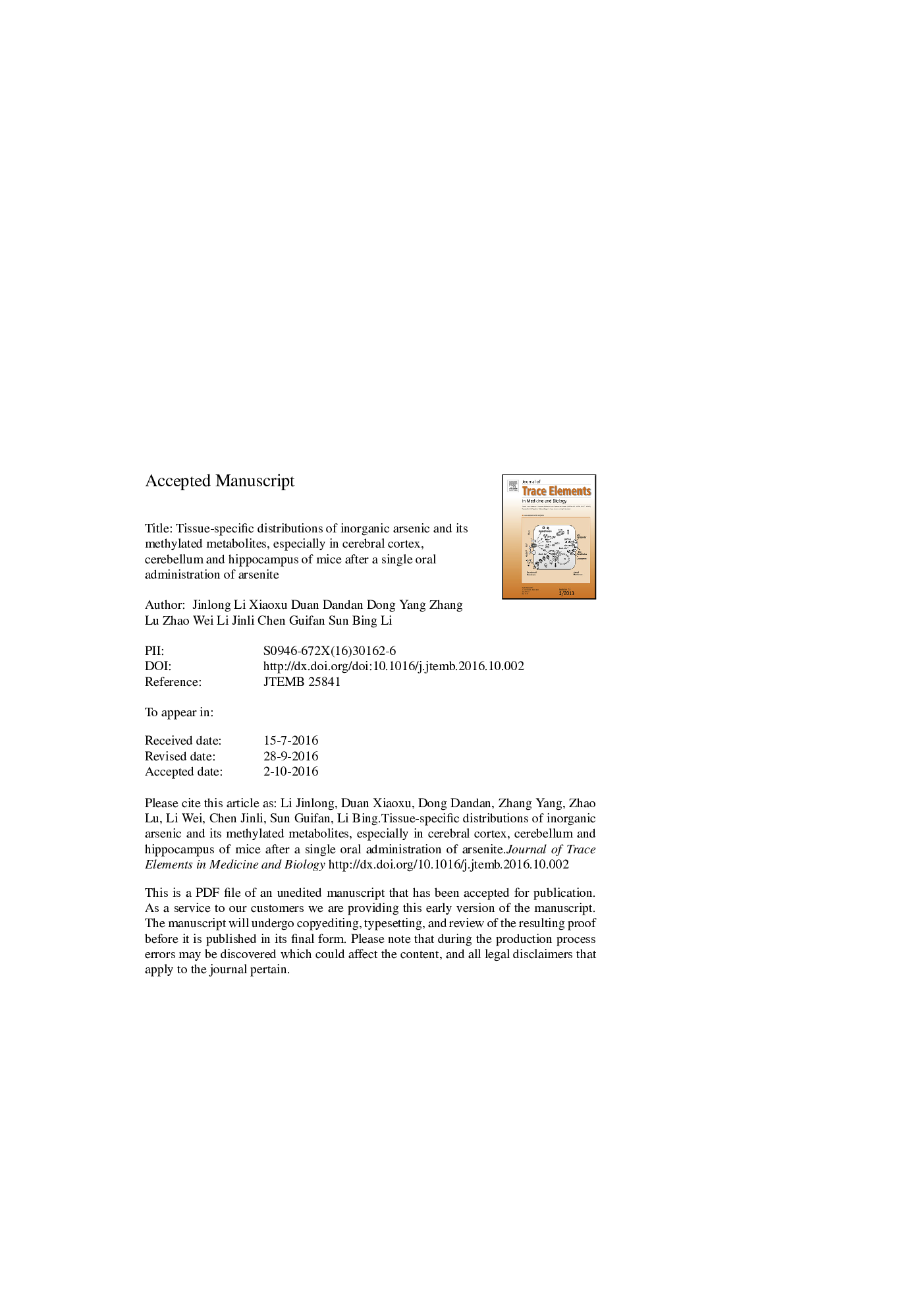| Article ID | Journal | Published Year | Pages | File Type |
|---|---|---|---|---|
| 5138746 | Journal of Trace Elements in Medicine and Biology | 2017 | 35 Pages |
Abstract
Groundwater contaminated with inorganic arsenic (iAs) is the main source of human exposure to arsenic and generates a global health issue. In this study, the urinary excretion, as well as the time-course distributions of various arsenic species in murine tissues, especially in different brain regions were determined after a single oral administration of 2.5, 5, 10 and 20 mg/kg sodium arsenite (NaAsO2). Our data showed that the peak times of urinary, hepatic and nephritic total arsenic (TAs) were happened at about 1 h, then TAs levels decreased gradually and almost could not be observed after 72 h. On contrast, the time course of TAs in lung, urinary bladder and different brain regions exhibited an obvious process of accumulation and elimination,and the peak times were nearly at 6 h to 9 h. TAs levels of 10 and 20 mg/kg NaAsO2 groups were significantly higher than 2.5 and 5 mg/kg groups, and the amounts of TAs in 5 mg/kg groups were in the order of liver > lung > kidney > urinary bladder > hippocampus > cerebral cortex > cerebellum. In addition, iAs was the most abundant species in liver and kidney, while lung and urinary bladder accumulated the highest concentrations of dimethylated arsenicals (DMA). What's more, the distributions of arsenic species were not homogeneous among different brain regions, as DMA was the sole species in cerebral cortex and cerebellum, while extremely high concentrations and percentages of monomethylated arsenicals (MMA) were found in hippocampus. These results demonstrated that distributions of iAs and its methylated metabolites were tissue-specific and even not homogeneous among different brain regions, which must be considered as to the tissue- and region-specific toxicity of iAs exposure. Our results thus provide useful information for clarifying and reducing the uncertainty in the risk assessment for this metalloid.
Related Topics
Physical Sciences and Engineering
Chemistry
Analytical Chemistry
Authors
Jinlong Li, Xiaoxu Duan, Dandan Dong, Yang Zhang, Lu Zhao, Wei Li, Jinli Chen, Guifan Sun, Bing Li,
